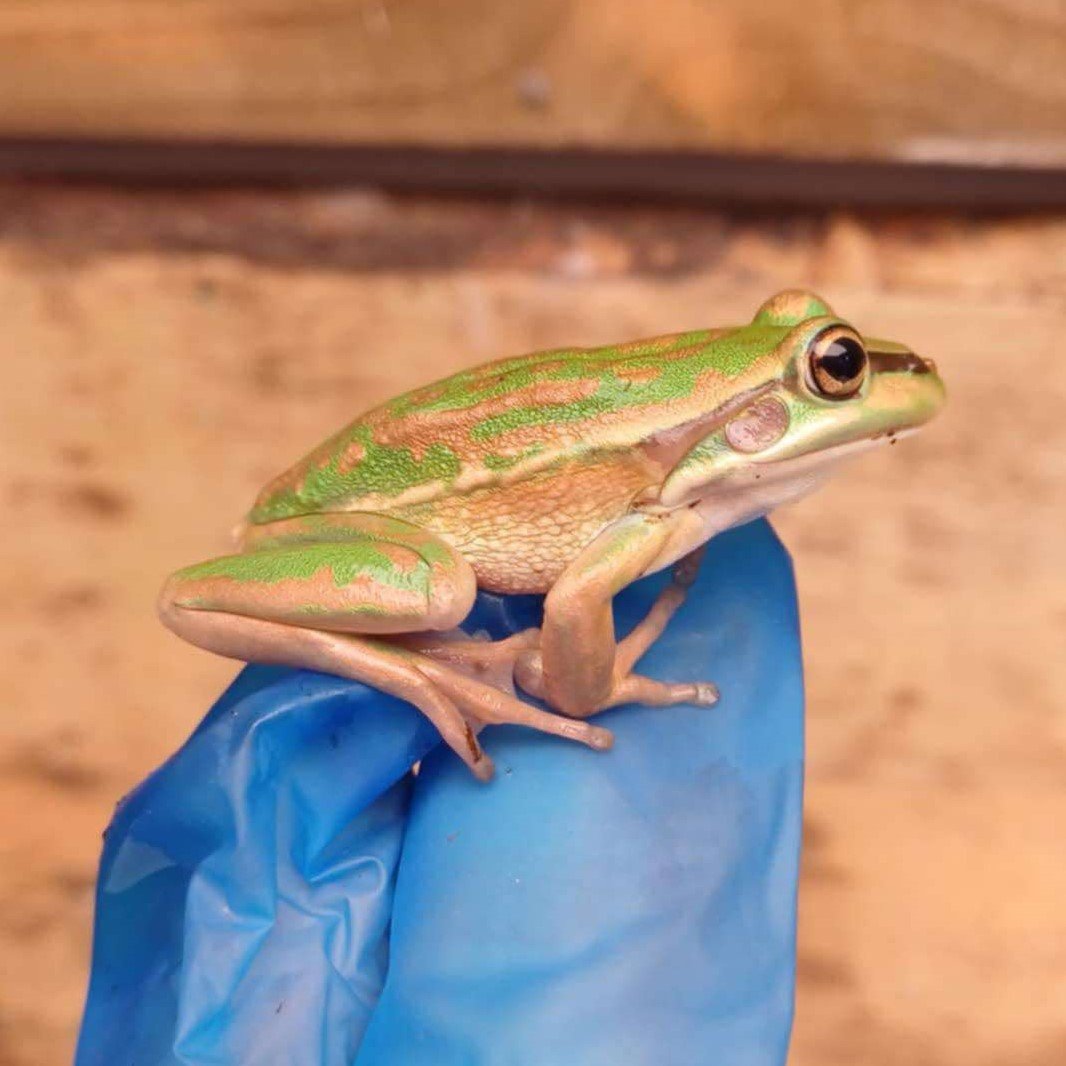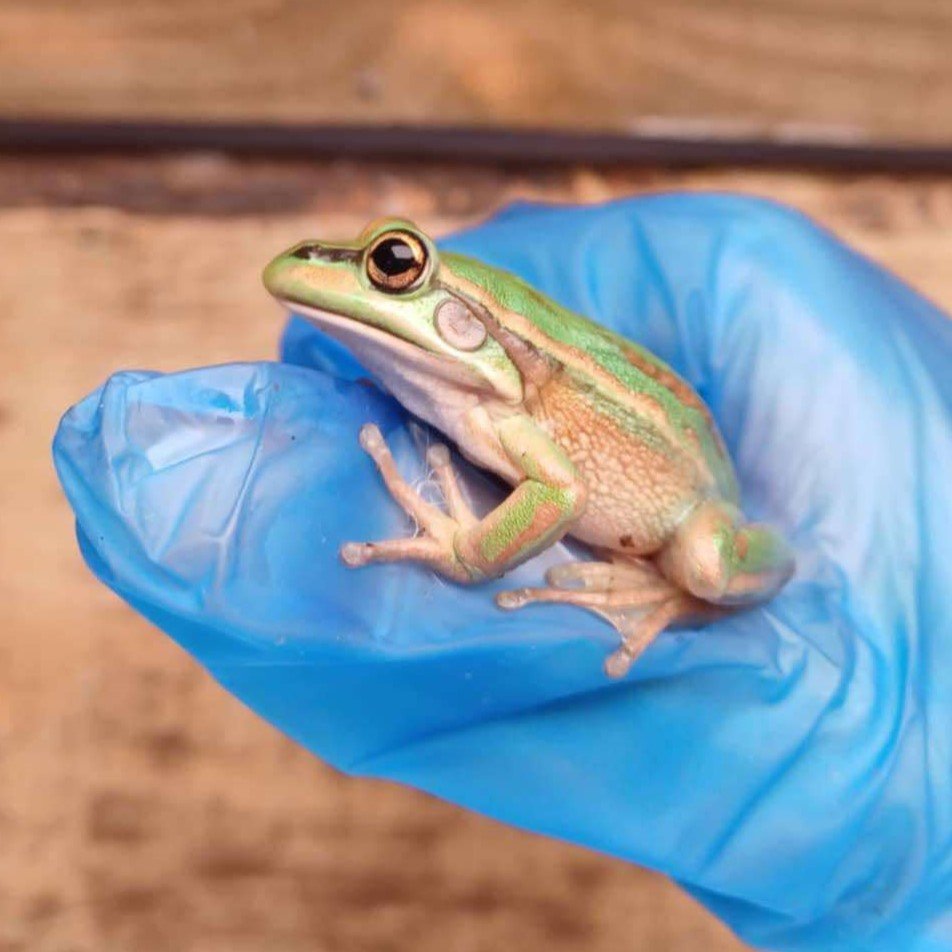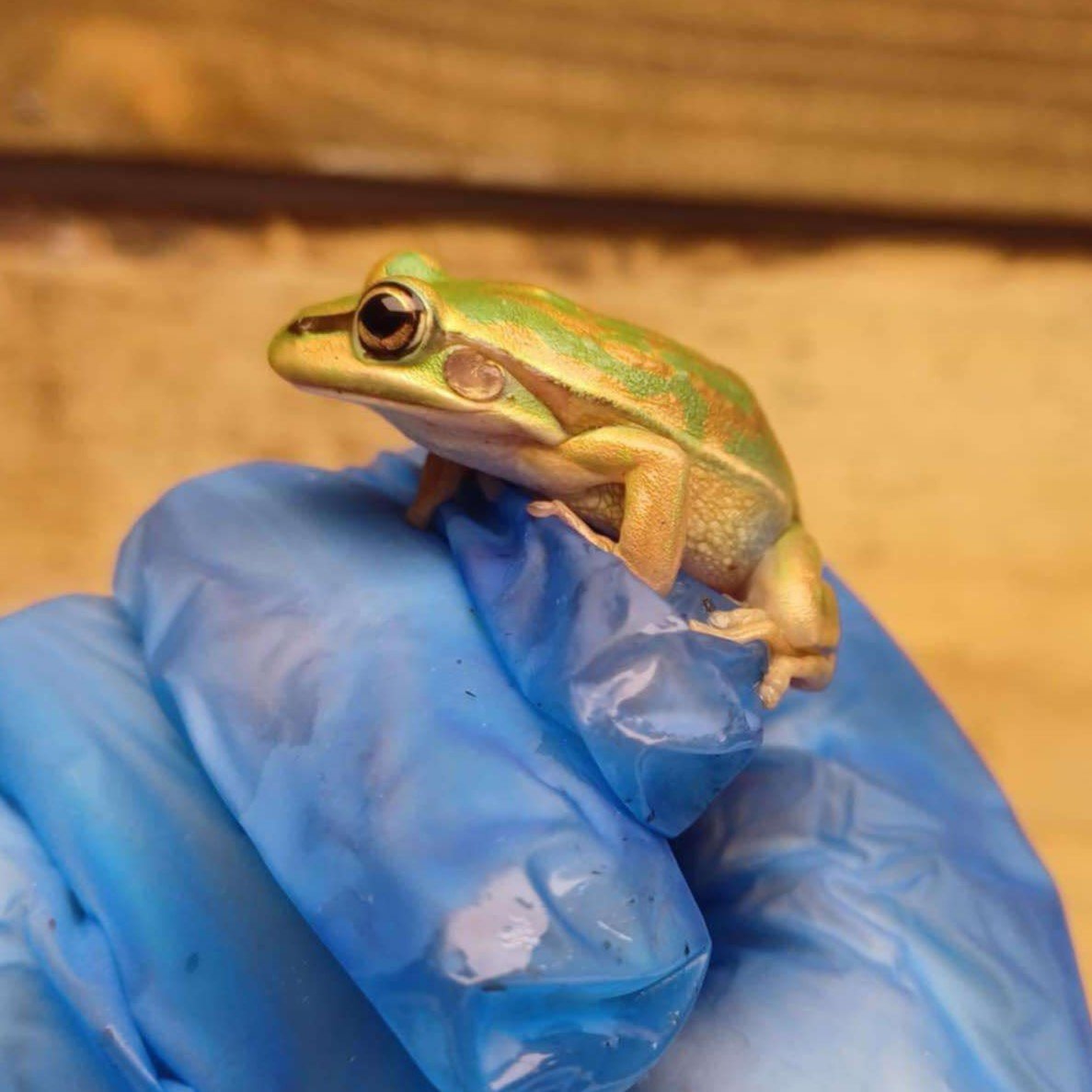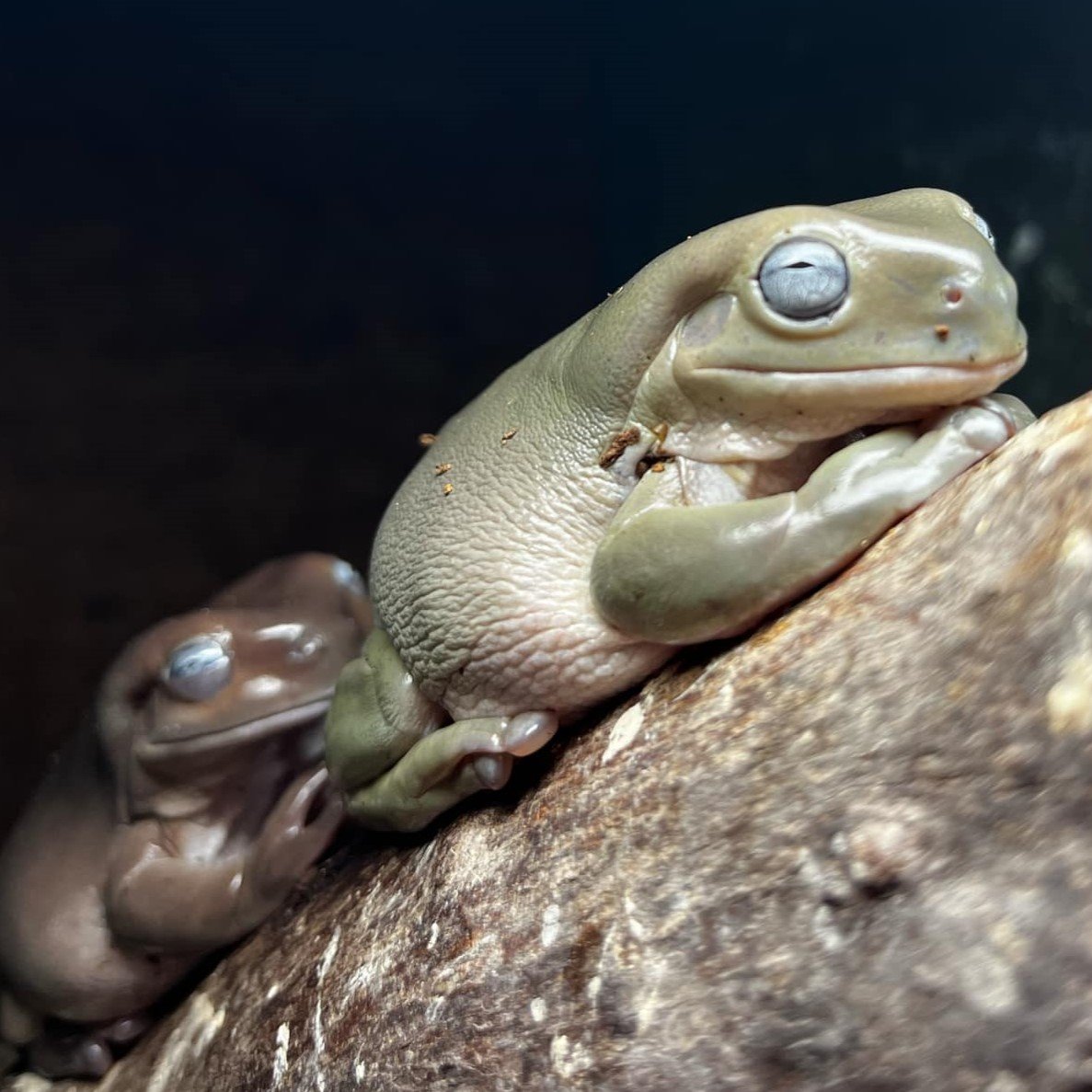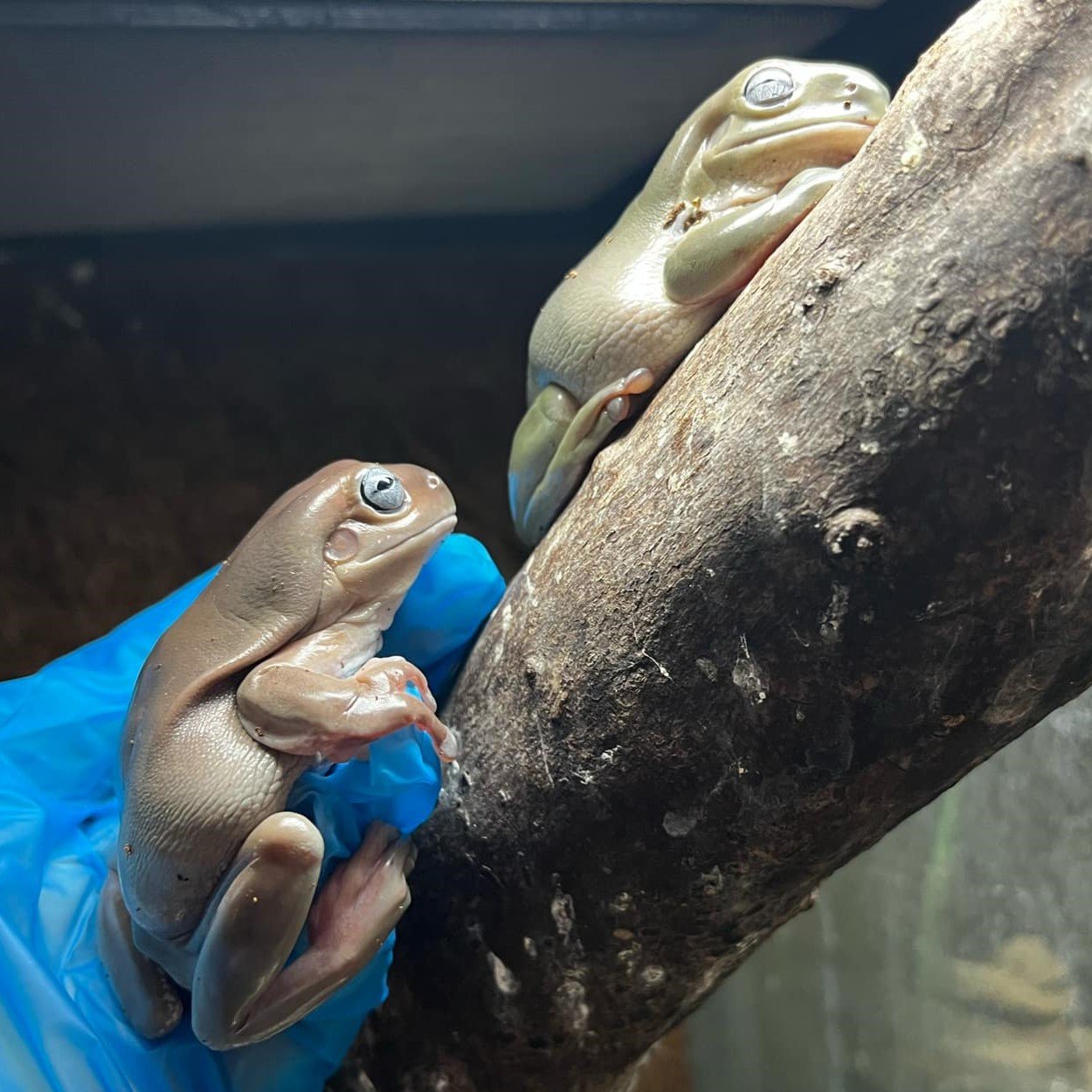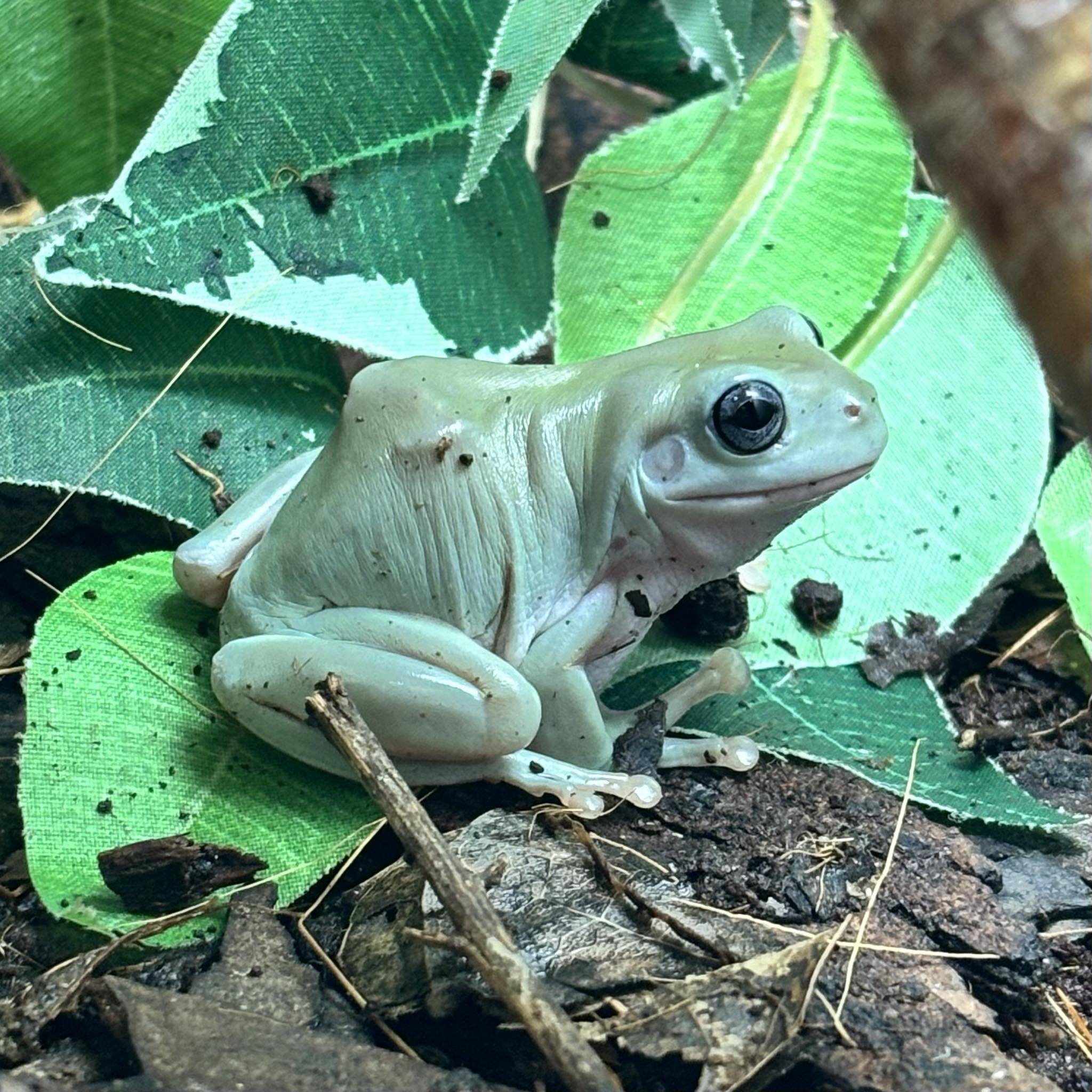Baby Green and Golden Bell Frogs For Sale - Litoria aurea
One of Australia’s largest frogs! Green and Golden Bell Frogs (Litoria aurea) will truly use all areas of their enclosure as they are both tree-dwelling and ground-dwelling, and also love to swim!
Photos taken October 2024
For sale in our Iver reptile shop
Age: CB24, Babies
Sex: Unsexed
Priced Individually
Handling: Amphibians are best kept as a display pet and infrequently handled with gloves due to their sensitive absorbent skin
Suitability: Beginner
Adult Size: Males reach 8cm, Females reach 11cm
Natural Habitat: South-eastern Australia. They are usually found basking on the edge of a water source amongst low branches.
Enclosure recommendations
As a large and active frog species minimum size enclosure for adult frogs is a glass terrarium measuring 90x45×60cm (LxDxH) with larger required if keeping more than 2 together. A large water area should be provided to allow them to submerge, with easy routes in and out. The water should be filtered or refreshed daily. There should be plenty of climbing branches, hides and real/artificial plants provided. The perfect frog for a bioactive live-planted Paludarium!
This species love to bask, so would benefit from an overhead heat source rather than heat mats. This should be thermostatically controlled, with temperatures measured with an accurate digital thermometer or heat gun. UV lighting is recommended.
One of Australia’s largest frogs! Green and Golden Bell Frogs (Litoria aurea) will truly use all areas of their enclosure as they are both tree-dwelling and ground-dwelling, and also love to swim!
Photos taken October 2024
For sale in our Iver reptile shop
Age: CB24, Babies
Sex: Unsexed
Priced Individually
Handling: Amphibians are best kept as a display pet and infrequently handled with gloves due to their sensitive absorbent skin
Suitability: Beginner
Adult Size: Males reach 8cm, Females reach 11cm
Natural Habitat: South-eastern Australia. They are usually found basking on the edge of a water source amongst low branches.
Enclosure recommendations
As a large and active frog species minimum size enclosure for adult frogs is a glass terrarium measuring 90x45×60cm (LxDxH) with larger required if keeping more than 2 together. A large water area should be provided to allow them to submerge, with easy routes in and out. The water should be filtered or refreshed daily. There should be plenty of climbing branches, hides and real/artificial plants provided. The perfect frog for a bioactive live-planted Paludarium!
This species love to bask, so would benefit from an overhead heat source rather than heat mats. This should be thermostatically controlled, with temperatures measured with an accurate digital thermometer or heat gun. UV lighting is recommended.
One of Australia’s largest frogs! Green and Golden Bell Frogs (Litoria aurea) will truly use all areas of their enclosure as they are both tree-dwelling and ground-dwelling, and also love to swim!
Photos taken October 2024
For sale in our Iver reptile shop
Age: CB24, Babies
Sex: Unsexed
Priced Individually
Handling: Amphibians are best kept as a display pet and infrequently handled with gloves due to their sensitive absorbent skin
Suitability: Beginner
Adult Size: Males reach 8cm, Females reach 11cm
Natural Habitat: South-eastern Australia. They are usually found basking on the edge of a water source amongst low branches.
Enclosure recommendations
As a large and active frog species minimum size enclosure for adult frogs is a glass terrarium measuring 90x45×60cm (LxDxH) with larger required if keeping more than 2 together. A large water area should be provided to allow them to submerge, with easy routes in and out. The water should be filtered or refreshed daily. There should be plenty of climbing branches, hides and real/artificial plants provided. The perfect frog for a bioactive live-planted Paludarium!
This species love to bask, so would benefit from an overhead heat source rather than heat mats. This should be thermostatically controlled, with temperatures measured with an accurate digital thermometer or heat gun. UV lighting is recommended.

